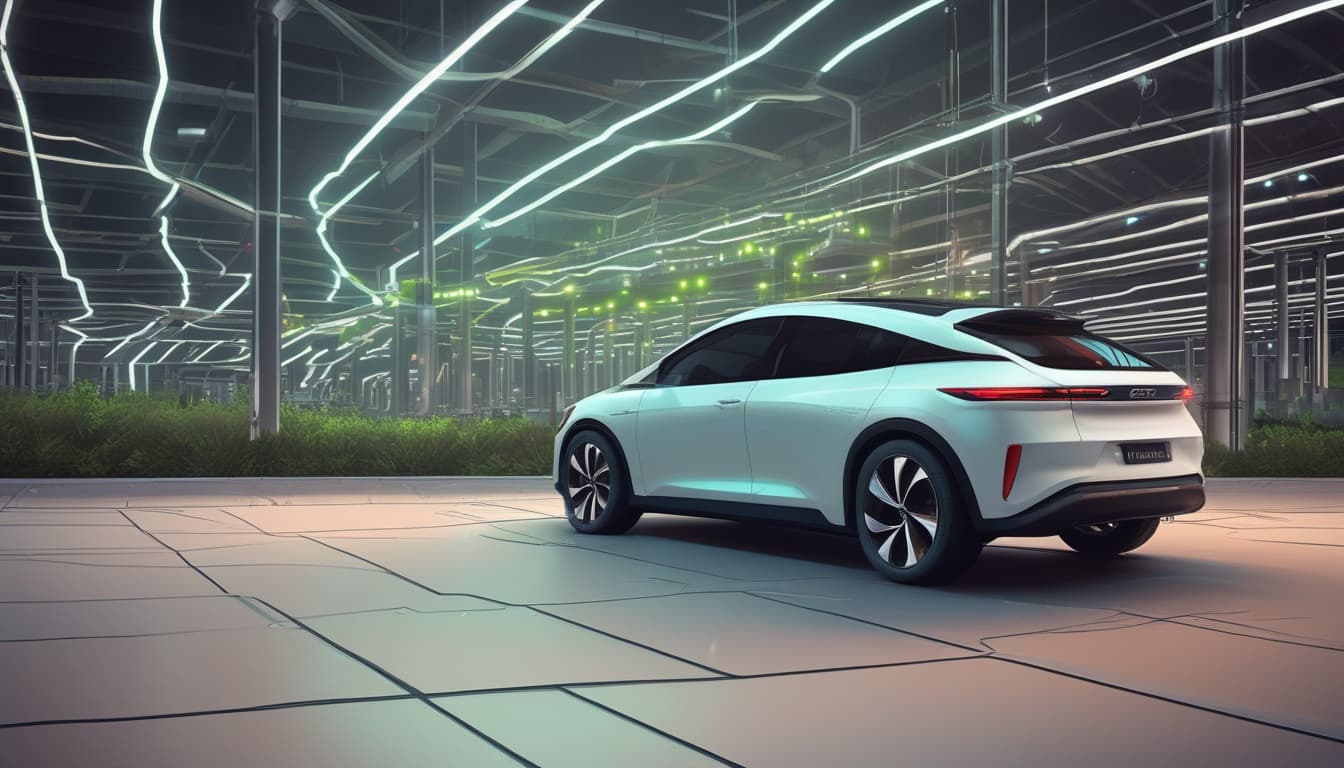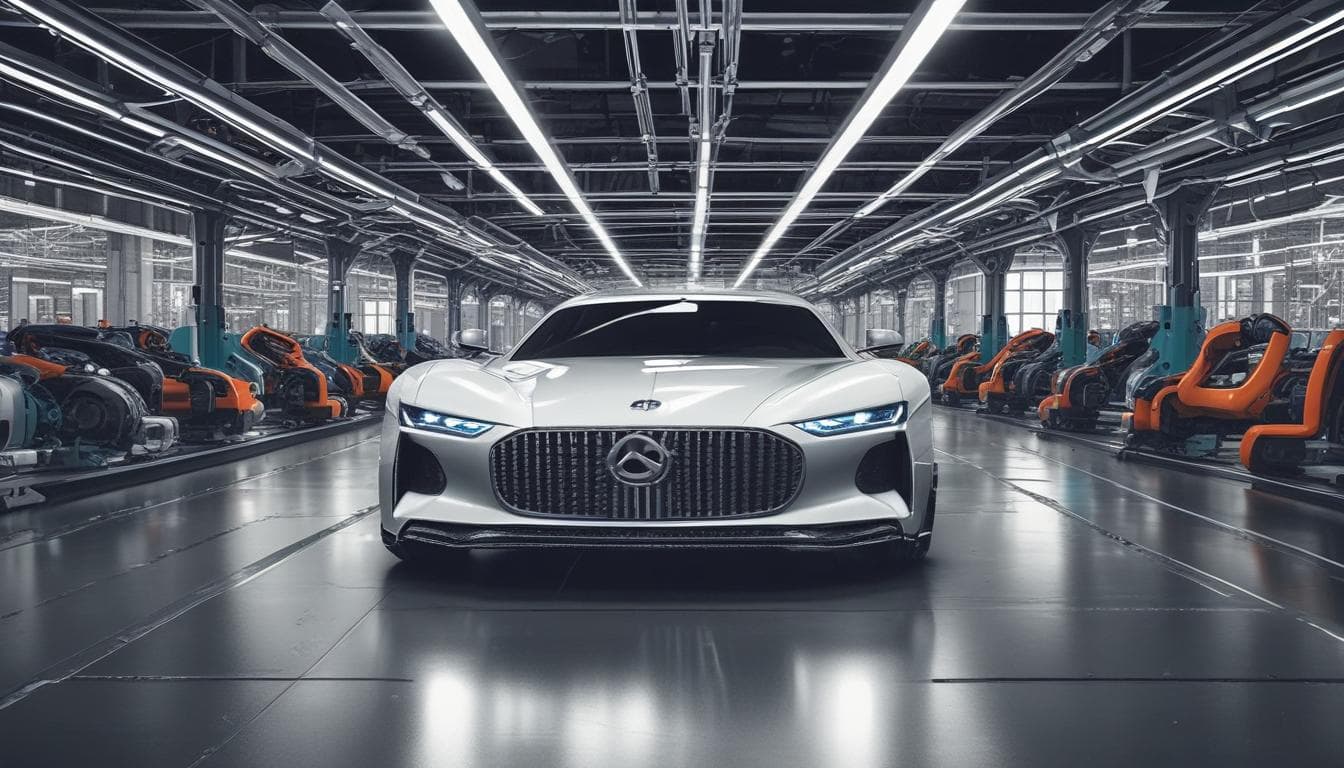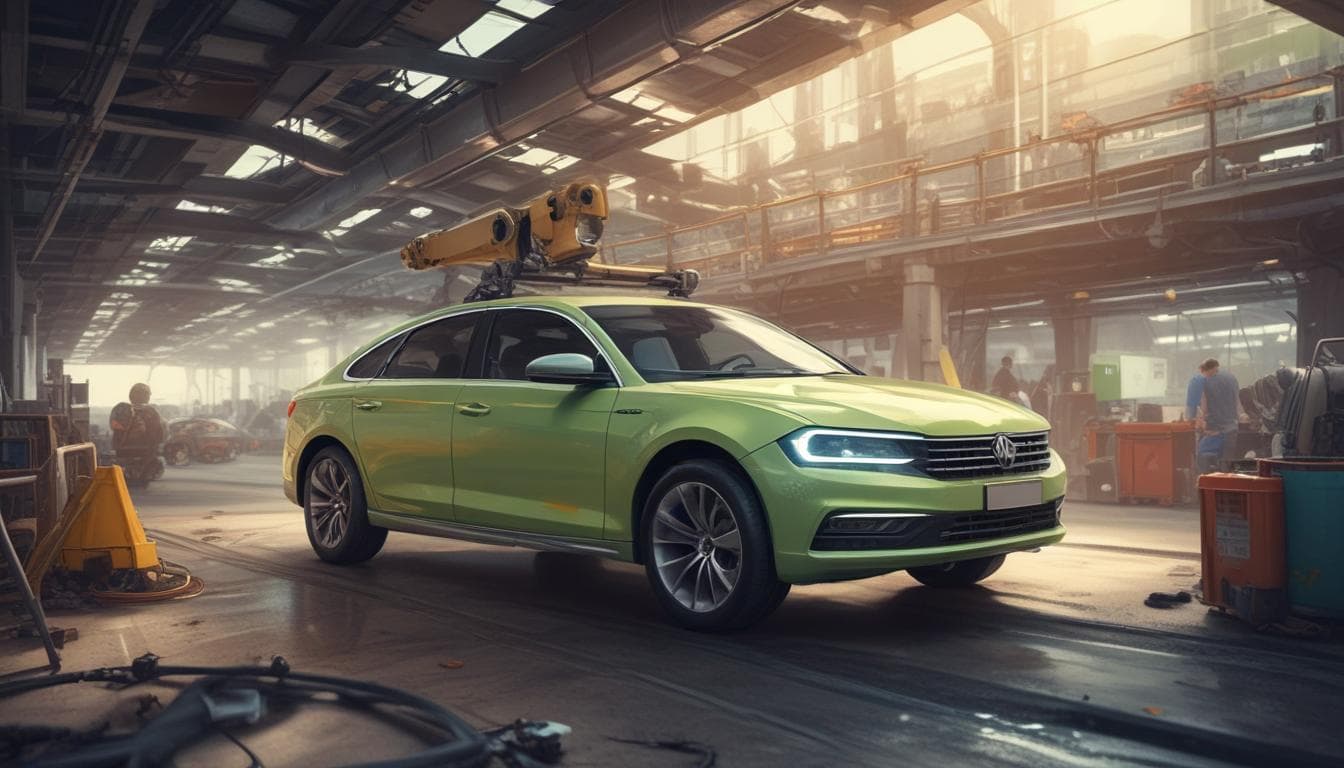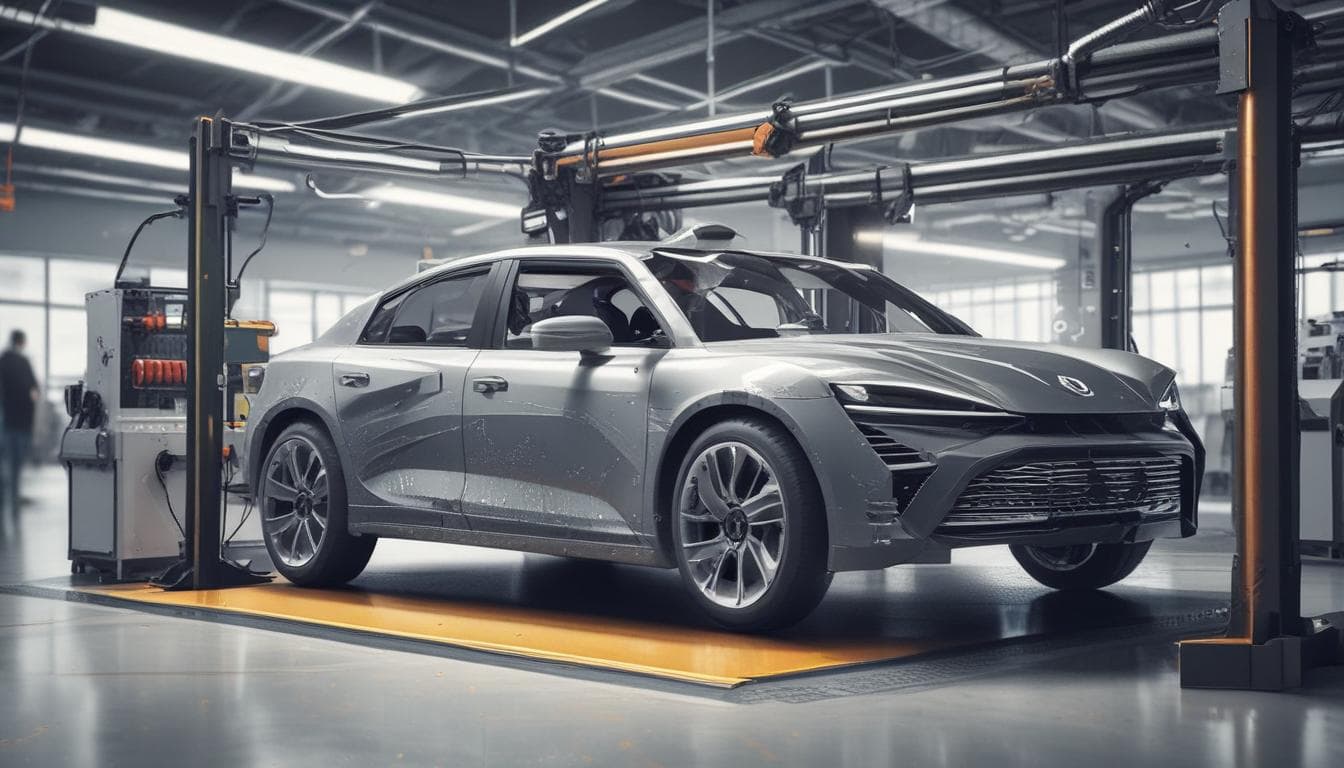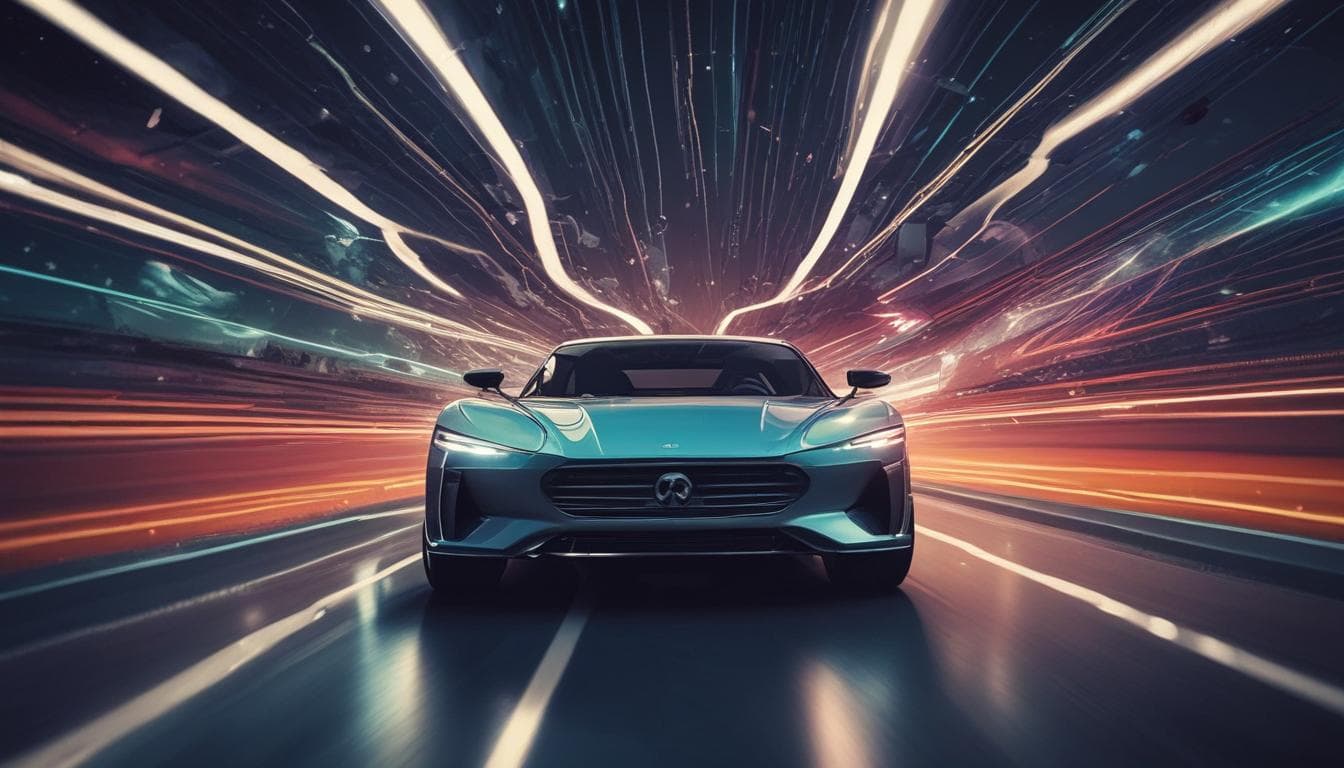The rise of electric vehicles (EVs) marks a significant shift in transportation, but their potential extends far beyond simply replacing internal combustion engines. Imagine a future where your parked EV not only draws power from the grid but also intelligently sends it back, helping to stabilize the electrical network, integrate renewable energy, and even earn you money. This is the promise of Vehicle-to-Grid (V2G) technology, a revolutionary concept poised to transform both the energy and automotive sectors. V2G facilitates a two-way flow of electricity between an EV's battery and the power grid, turning potentially millions of vehicles into a vast, distributed energy storage network. As EV adoption accelerates and pressure mounts on aging grid infrastructure, understanding V2G is crucial for anyone interested in the future of mobility and energy.
Understanding V2G Technology
Vehicle-to-Grid technology represents a significant leap from conventional EV charging. It hinges on the principle of bidirectional power flow, enabling EVs to act as mobile batteries that can serve the grid's needs when parked and connected.
The Fundamentals of Bidirectional Charging
Traditional EV charging, often referred to as V1G or unidirectional smart charging, involves controlling when and how fast an EV charges, typically to take advantage of off-peak electricity rates or respond to grid signals requesting reduced demand. V2G goes a step further by allowing the EV to discharge its stored energy back into the grid. This requires specialized hardware and sophisticated communication.
The core components enabling V2G include a V2G-compatible EV with a bidirectional on-board charger (OBC), a bidirectional EV Supply Equipment (EVSE) or charging station, and a communication system linking the vehicle, charger, and the grid operator or aggregator. Communication protocols, primarily ISO 15118, are essential for managing the power flow securely and efficiently, ensuring the vehicle's state of charge, owner preferences, and grid requirements are all coordinated. When the grid requires support, the system signals the connected EV to discharge a specific amount of power for a designated period, reversing the typical charging process.
Key Components and Infrastructure
Bringing V2G to life requires a coordinated ecosystem of hardware and software. Firstly, the electric vehicle itself must be equipped with a battery capable of handling bidirectional power flow and an OBC designed for discharging. While not all current EVs support V2G, manufacturers like Nissan, Mitsubishi, Ford, and others are increasingly incorporating this capability or planning for it in future models.
Secondly, specialized bidirectional chargers are necessary. These units are more complex and currently more expensive than standard unidirectional chargers. They must handle both AC-to-DC conversion for charging and DC-to-AC inversion for discharging power back to the grid, meeting stringent safety and grid interconnection standards. Both DC fast chargers and AC Level 2 chargers can be designed for bidirectional operation.
Finally, grid integration is paramount. Utilities and grid operators need smart grid infrastructure capable of communicating with V2G assets, managing power flows, and compensating EV owners for their services. Aggregation platforms often act as intermediaries, bundling the capacity of numerous EVs to participate in energy markets or provide grid services effectively. This integration is crucial for realizing the full potential described in the broader context of the electric vehicle revolution transforming transportation.

The Benefits and Opportunities of V2G
The potential advantages of widespread V2G adoption are substantial, offering benefits to grid operators, EV owners, and the environment.
Grid Stabilization and Ancillary Services
One of the most significant benefits of V2G is its ability to provide essential grid services, enhancing stability and reliability. EVs connected in V2G mode can act as rapid-response resources.
- Peak Shaving: During periods of high electricity demand (e.g., hot summer afternoons), V2G-enabled EVs can discharge power back to the grid, reducing the need for utilities to fire up expensive and often polluting 'peaker' power plants. This lowers overall energy costs and emissions.
- Frequency Regulation: The grid requires a stable frequency (typically 50 or 60 Hz). V2G vehicles can rapidly inject or absorb small amounts of power to help maintain this balance, a critical service for grid health.
- Voltage Support: Similar to frequency regulation, V2G can help manage local voltage levels on the distribution network.
- Renewable Firming: By absorbing excess generation when solar or wind power is abundant and discharging when it's scarce, V2G helps smooth out the intermittency of renewable energy sources.
These services contribute significantly to grid resilience and support broader initiatives focused on sustainable automotive practices.
Economic Advantages for EV Owners and Utilities
V2G creates compelling economic incentives. For EV owners, participating in V2G programs can generate revenue streams by selling stored energy back to the grid or receiving payments for providing ancillary services. This can significantly offset the cost of electricity used for charging, potentially lowering the total cost of EV ownership.
Utilities also stand to gain. By leveraging V2G resources, they can defer costly upgrades to transmission and distribution infrastructure that would otherwise be needed to meet peak demand. Furthermore, optimizing the use of distributed energy resources like V2G-enabled EVs can lead to more efficient grid operation and reduced reliance on fossil fuel generation. This economic model could potentially integrate with new ownership paradigms, such as exploring innovative automotive subscription services that bundle V2G participation.
Enhancing Renewable Energy Integration
Perhaps one of V2G's most profound impacts lies in its synergy with renewable energy sources like solar and wind power. These sources are inherently variable, generating electricity only when the sun shines or the wind blows. EV batteries, aggregated through V2G, can act as a massive, distributed storage system.
During times of high renewable generation and low demand, EVs can charge up, effectively storing clean energy that might otherwise be curtailed (wasted). Conversely, when renewable output drops but demand remains high, these EVs can discharge their stored clean energy back to the grid, reducing the need for fossil fuel backup generation. This capability is vital for enabling higher penetration of renewables and accelerating the transition to a cleaner energy system.

Challenges and Hurdles to Widespread V2G Adoption
Despite its immense potential, several challenges must be overcome for V2G technology to become mainstream.
Battery Degradation Concerns
The most frequently cited concern is the potential impact of increased charging and discharging cycles on EV battery health and longevity. Batteries naturally degrade over time with use, and the additional cycles required for V2G operation could theoretically accelerate this process. Manufacturers are cautious, and warranty implications for V2G usage are still evolving.
However, ongoing research focuses on smart charging/discharging algorithms that minimize battery stress. Furthermore, studies suggest that if V2G cycles are managed intelligently (e.g., avoiding deep discharges or high power rates unnecessarily), the impact on battery lifespan might be less significant than initially feared. Advances in battery chemistry and management systems will be key to mitigating these concerns.
Standardization and Interoperability
For V2G to function seamlessly, universal standards and protocols are essential. While ISO 15118 is emerging as a key standard for V2G communication, ensuring interoperability between different vehicle brands, charger manufacturers, and utility systems remains a challenge. Lack of standardization can lead to fragmented markets, compatibility issues, and increased implementation costs.
Developing clear, consistent regulatory frameworks and grid interconnection rules across different regions is also crucial. Utilities need established procedures for integrating and compensating V2G resources. Ensuring robust communication, akin to the systems being developed for advanced V2X connected vehicle applications, is vital for reliable V2G operation.
Cost and Infrastructure Investment
The current cost of bidirectional chargers is significantly higher than their unidirectional counterparts, posing a barrier for individual EV owners and fleet operators. While costs are expected to decrease with scale and technological advancements, initial investment remains a factor.
Furthermore, significant investment may be required in grid infrastructure upgrades to handle widespread bidirectional power flows, particularly at the local distribution level. Developing sophisticated aggregation platforms and market mechanisms to manage potentially millions of V2G assets also requires substantial upfront investment and development effort.
Cybersecurity and Data Privacy
The communication links between EVs, chargers, aggregators, and the grid create potential cybersecurity vulnerabilities. Protecting these systems from malicious attacks is paramount to prevent disruption of energy services or unauthorized control over vehicles. Robust encryption, authentication, and intrusion detection systems are necessary.
Data privacy is another concern, as V2G operation involves sharing information about vehicle location, state of charge, and energy usage patterns. Clear policies and secure data handling practices are needed to protect user privacy while enabling effective V2G services. These concerns mirror the broader challenges faced in securing increasingly connected vehicles.
The Future Landscape of V2G
The trajectory for V2G technology points towards increasing integration and sophistication, driven by technological innovation, market forces, and supportive policies.
Technological Advancements
Innovation continues to push the boundaries of V2G. Wireless V2G charging is under development, which could offer greater convenience by eliminating the need for physical cables. Integration with Home Energy Management Systems (HEMS) will allow homeowners to optimize V2G operation alongside rooftop solar, stationary batteries, and smart appliances for maximum benefit.
The application of artificial intelligence (AI) and machine learning will play a crucial role in optimizing V2G dispatch. AI algorithms can predict energy prices, grid needs, driver behavior, and renewable energy generation to make real-time decisions about when and how much to charge or discharge, maximizing efficiency and economic returns. This aligns with the broader trend of AI reshaping various aspects of the automotive industry.
Market Growth and Pilot Projects
Numerous V2G pilot projects are underway globally, demonstrating the technical feasibility and economic viability of the technology in diverse settings. Successful trials in Europe (e.g., Netherlands, UK, Denmark), Japan, and parts of the United States are providing valuable data and operational experience.
Major automakers, utility companies, charging infrastructure providers, and technology startups are forming partnerships to accelerate V2G deployment. As more V2G-capable vehicles enter the market and charging infrastructure expands, the market is expected to grow significantly in the coming years, transitioning from pilot phases to commercial-scale operations.

Policy and Regulatory Support
Government policies and regulations will be critical enablers for V2G adoption. Incentives for purchasing bidirectional chargers, favorable electricity tariffs for V2G participants, and clear grid interconnection standards can significantly lower barriers to entry.
Integrating V2G into national energy strategies and climate action plans acknowledges its potential contribution to grid decarbonization and resilience. As policymakers recognize the value of distributed energy resources, supportive frameworks are expected to become more common, paving the way for V2G to realize its full potential.
Conclusion
Vehicle-to-Grid technology represents more than just an advanced charging method; it's a paradigm shift that reimagines the relationship between electric vehicles, their owners, and the energy grid. By enabling EVs to intelligently discharge power back when needed, V2G offers a powerful solution for enhancing grid stability, integrating renewable energy sources more effectively, and creating new economic value for EV owners. While challenges related to battery health, standardization, cost, and cybersecurity remain, ongoing technological advancements, growing industry collaboration, and supportive policies are paving the way for its widespread adoption.
The journey towards a V2G-enabled future requires a concerted effort from automakers, utilities, technology providers, policymakers, and consumers. As we move towards an increasingly electrified and interconnected transportation system, V2G stands out as a key enabling technology, transforming parked EVs from passive energy consumers into active participants in a cleaner, more resilient, and efficient energy ecosystem.
What are your thoughts on V2G technology? Do you see it becoming a standard feature in future EVs? Share your insights and join the conversation on Fagaf!
